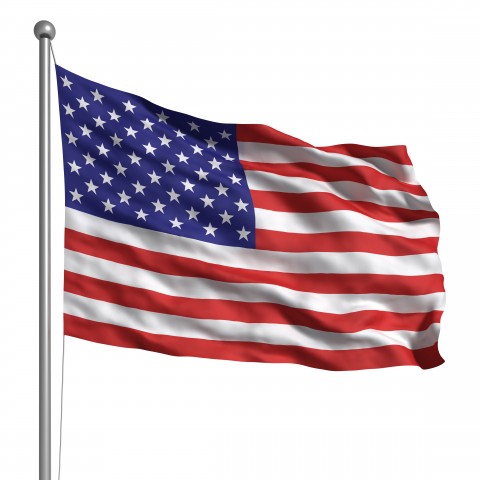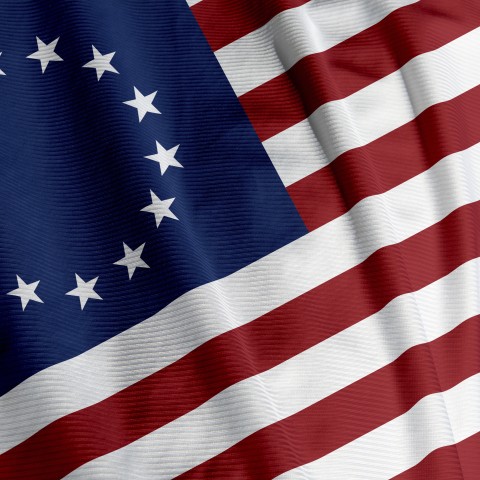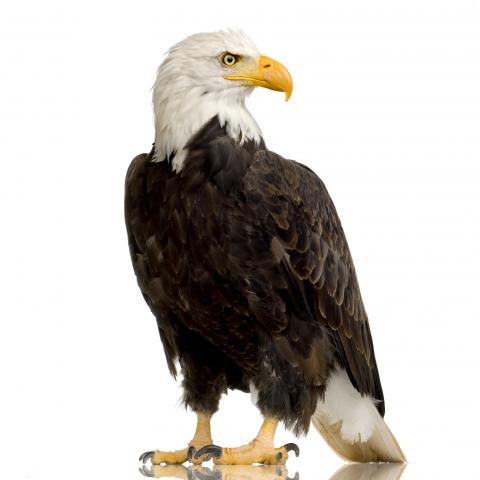
A flag can say a lot about its country, and each one is steeped in years of history. The United States Flag, adopted in 1777, has undergone many changes over the years as circumstances change and states are added to our nation.
So, why is Flag Day observed in the U.S.? In this article, you’ll learn all about Flag Day’s meaning to U.S. citizens, some facts about the U.S. Flag, and some important vocabulary.
Let’s get started.

1. U.S. Flag Day History and Meaning

What is Flag Day in the U.S.?
Flag Day in the United States is a day of commemoration for the country’s freedom and—even more so—its flag, which was adopted in 1777 by the Second Continental Congress. The adoption of the U.S. Flag signified independence from Great Britain and unity among the different states. Prior to its incorporation, the U.S. Flag looked very much like the British Flag; in addition, the different states had previously fought the British under a variety of different flags. Bernard J. Cigrand is credited as being the person who had the most influence in making Flag Day an official holiday, though there were people before and after him who made the same proposal. In 1916, President Woodrow Wilson took Cigrand’s proposal into consideration and decided to make Flag Day official.Flag Day in the U.S. is a time of commemorating the events leading to the country’s independence and reflecting on what it is to be a United States citizen.
- Do you want more U.S. cultural info? Check out the Top 5 Pop Culture Things/Icons You Need to Know About in the USA!
2. When is Flag Day in the U.S.?
Each year, the United States celebrates Flag Day on June 14.
- By the way, here are the Top 5 Most Important Dates in America.
3. How is Flag Day Celebrated?
While the U.S. National Flag Day is not a public holiday, there are a variety of activities that can take place on this day. On Flag Day, U.S.A. citizens fly the flag at their homes and outside of their business buildings. The country is bright with red, white, and blue wherever you go! Even major roads and streets may be decorated with red, white, and blue streamers or miniature flags.
The National Flag Day Foundation also does a special flag-raising ceremony, in which attendees sing the national anthem (The Star-Spangled Banner) and say the Pledge of Allegiance with their right hand over their heart. There’s usually a Flag Day parade as well.
In Philadelphia, many people visit the Betsy Ross House to celebrate Flag Day. This is the previous home of Betsy Ross, the woman often credited with creating the first U.S. Flag. Another popular location on Flag Day is the Star-Spangled Banner House, which is in Baltimore, Maryland.
- See our list of the Top 10 Tourist Attractions in the United States!
4. Changes to the Flag

Do you know how many times the United States Flag has been changed or altered in some way? Twenty-six!
Betsy Ross’s flag was composed of thirteen red and white stripes in alternating order, and a blue canton in the top left corner containing thirteen stars arranged in a circle. Today, the flag contains thirteen red and white stripes, but now there are fifty stars (one for each state), no longer in a circle.
5. Must-Know Flag Day Vocabulary

Are you ready to review some of the vocabulary words from this article? Here’s a quick list!
- White
- Red
- Blue
- Sing
- Bald eagle
- The national bird of the United States
- Revolutionary War
- The war that allowed the United States to gain its independence from Great Britain
- Flag
- Stars and Stripes
- The United States Flag consists of fifty stars (representing the fifty states) and thirteen stripes (representing the original thirteen English colonies in the U.S.). Stars and Stripes is a nickname of the U.S. Flag.
- Parade
- United States
- Betsy Ross
- The woman credited with creating the first U.S. Flag, in 1870
- Philadelphia
- A large city in the state of Pennsylvania, where the first U.S. Flags were made
- Star-Spangled Banner
- The national anthem of the United States, written by Francis Scott Key in 1812; also a nickname of the U.S. Flag
- Pledge of Allegiance
- A pledge spoken to indicate allegiance (loyalty) to the United States
- Old Glory
- A nickname used for the U.S. Flag
To hear the pronunciation of each word, be sure to visit our U.S. Flag Day vocabulary list!
Final Thoughts
We hope you enjoyed learning about Flag Day in the United States with us, and that you took away some valuable information.
What does your country’s flag look like? Do you have a Flag Day in your country? Let us know in the comments!
If you want to continue learning about U.S. culture and the English language, EnglishClass101.com has some great free resources for you, straight from our blog:
- The Fourth of July: Independence Day in the United States
- Time Off to Vote: Voting and Elections on Election Day
- Proper American Etiquette in the United States
- Life Event Messages in English: Happy Birthday & Much More!
- Finding the Perfect Mad with Anger Sentence in English!
This only scratches the surface of everything we have to offer English-learners. To make the most of your time on EnglishClass101.com, create your free lifetime account today. You can also upgrade to our Premium or Premium PLUS options, which will give you access to exclusive content and lessons.
Happy learning, and stay safe out there!










